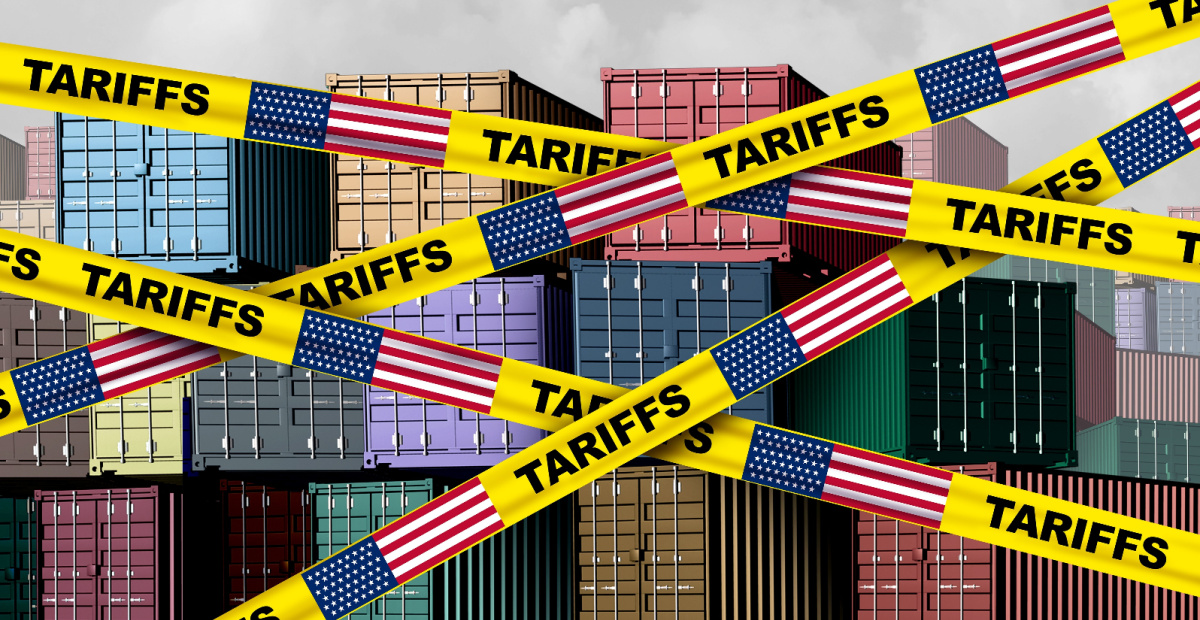Hard landing for the US “increasingly likely”: American Century

The US economy continues to risk a hard landing as tariff-fuelled volatility continues despite glimmers of hope remaining for a soft landing, according to the latest forecasts from American Century Investments.
Multi-asset strategies chief investment officer, Richard Weiss, said tariff risks have seen the strength of US equities continue to fall.
“Inflation forecasts and other key factors underpinning our medium-term (3- to 5-year) capital market assumptions (CMAs) for 2025 were formulated in April, before U.S. tariffs were announced. Due to the potentially large and far-reaching impacts of those tariffs, we may revise some of these assumptions later this year, depending on how events unfold,” he said.
“Cash returns should remain ahead of inflation. Given today’s yields, our forecast for returns on longer-dated bonds is still healthy. We lowered our returns forecasts for all types of equities, reducing valuations for U.S. stocks and moderating our earnings outlook overall.
“We expect P/E multiples for U.S. large-cap stocks to decline over the next five years, reducing our (arithmetic average) return forecast to 6.50% compared to 7.25% last year. We expect multiples for U.S. small-cap and non-U.S. developed market equities to hold steady, raising their return outlooks above those for U.S. large- and mid-caps. Still, we expect U.S. growth stocks to deliver much stronger real earnings growth than U.S. value, U.S. small-cap or non-U.S. equities.
“Our outlook for most fixed-income categories is little changed compared with 2024, except for U.S. high yield and Convertible bonds where we expect returns to be 0.50% and 0.75% lower. Our cash forecast rose 0.25%, while the average inflation expectation rose to 2.75% compared to 2.5% in 2024. Taken together, the forecasted average annual return to a portfolio of 60% global stocks/40% global bonds (with the U.S. representing 60% of both asset classes) for the next five years now stands at 6.04%, down from 6.40% in last year’s medium-term outlook.”
Weiss confirmed American Century had developed six scenarios that leverages research on “long-term economic drivers” to determine what markets and economies could look like over the next five years. These included:
- Soft Landing: Inflation drifts lower with moderate GDP growth, a continuation of the Fed’s actions of late 2024.
- Hard Landing: Relatively high short-term rates push inflation below target, but at the expense of GDP growth.
- Tech Shock: Led by advances in AI, productivity gains push GDP higher, increase earnings, and lower inflation.
- Policy Shock: Tariffs (U.S.-imposed and retaliatory) stifle growth and raise prices, causing stagflation or a recession.
- Climate Change: Extreme weather events require costly repairs, increase insurance rates, and hit food prices.
- Grey Economy: Demographics dominate, as an aging U.S. population spends less on consumer goods, travel, etc.
“We reduced our return outlook for U.S. equities by 0.80% across all major categories. We also lowered our return forecasts for non-U.S. core and emerging market equities by a smaller increment,” Weiss said.
“We expect returns from U.S. high yield bonds to moderate as spreads in that sector have been at historically tight levels that are unlikely to persist. The outlook for REIT returns is based on an uncertain demand environment.
“While U.S. large-cap growth stocks have been propelled higher in recent years by both earnings growth and high price-earnings multiples, going forward we expect valuation multiples to decline even as earnings remain healthy. We expect the average P/E multiple for U.S. large-cap value stocks to decline to a much lesser extent, and while we expect earnings growth for value stocks to be modest over the next five years, dividends should support the asset class.
“We expect U.S. small-cap stocks to deliver earnings growth that exceeds that of large-cap value stocks, while their P/E multiples are likely to experience little change. Non-U.S. developed equities are projected to deliver returns similar to U.S. small caps, but those returns rely more heavily on dividends and less on EPS growth.
“As noted previously, these projections were made before the U.S. announced significant tariffs would be imposed on imports from most other countries.”










MIS pay how much ? NOTHING Adviser Govt income Theft continues. Another sad joke from Canberra
Will we be able to look up and compare AMP’s underperforming and performance test challenged funds too?
Yawn. This is pretty rudimentary stuff, and largely looks like regurgitated and reskinned stuff that anyone can get off the…
The pay for research model is not perfect but I note ASIC have not actually raised this as an issue…
Here we go. The current test is rubbish, notably the Trustee Directed Product one, yet this feels like rationale for…